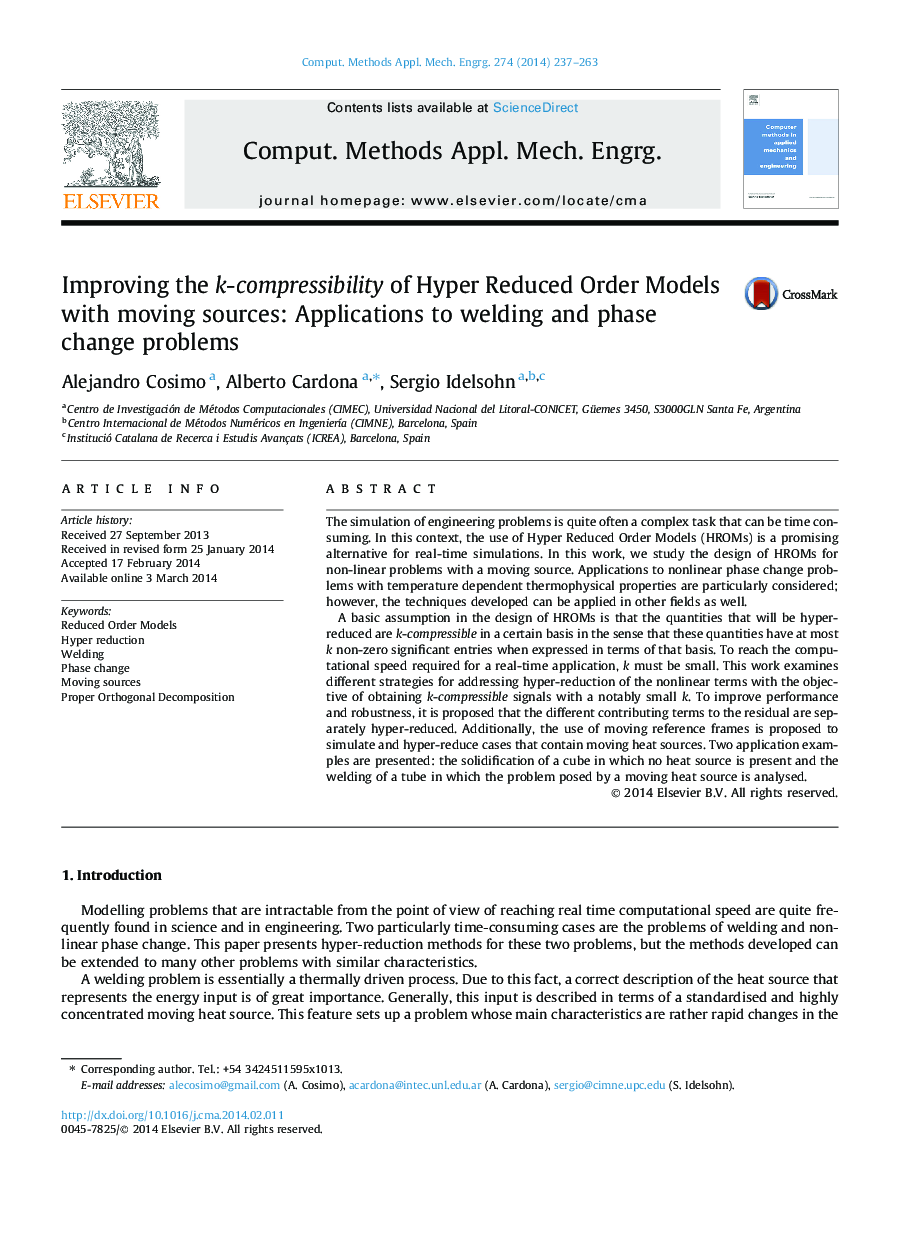| Article ID | Journal | Published Year | Pages | File Type |
|---|---|---|---|---|
| 6917737 | Computer Methods in Applied Mechanics and Engineering | 2014 | 27 Pages |
Abstract
A basic assumption in the design of HROMs is that the quantities that will be hyper-reduced are k-compressible in a certain basis in the sense that these quantities have at most k non-zero significant entries when expressed in terms of that basis. To reach the computational speed required for a real-time application, k must be small. This work examines different strategies for addressing hyper-reduction of the nonlinear terms with the objective of obtaining k-compressible signals with a notably small k. To improve performance and robustness, it is proposed that the different contributing terms to the residual are separately hyper-reduced. Additionally, the use of moving reference frames is proposed to simulate and hyper-reduce cases that contain moving heat sources. Two application examples are presented: the solidification of a cube in which no heat source is present and the welding of a tube in which the problem posed by a moving heat source is analysed.
Related Topics
Physical Sciences and Engineering
Computer Science
Computer Science Applications
Authors
Alejandro Cosimo, Alberto Cardona, Sergio Idelsohn,
